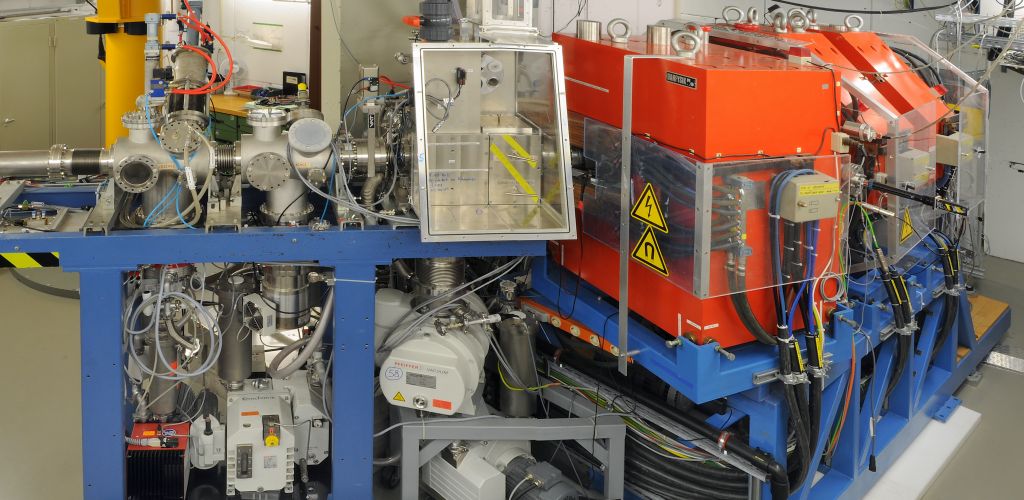TASCA Facility
TASCA
(TransActinide Separator and Chemistry Apparatus )
is a
Gas-filled recoil-separator
- with maximized transmission (efficiency) for Transactinides (SHE = Superheavy Elements)
- from hot-fusion reactions with actinide targets
in particular for:
- Chemical investigations of elements 104 to 116
- Nuclear structure and nuclear reaction investigations of the most n-rich nuclides Z ≥ 104
- "Chemistry" in the separator - probe the influence of the gas
TASCA is located at the GSI Helmholzzentrum für Schwerionenforschung, Darmstadt, Germany.

Photo: G. Otto / GSI
The highly efficient gas-filled TransActinide Separator and Chemistry Apparatus (TASCA) is a recoil separator optimized for the production and isolation of neutron-rich isotopes of elements around Z=112-120 in 48Ca and 50Ti induced hot-fusion reactions with actinide targets.
Target System
A rotating target wheel with 100 mm diameter which comprises four individual target segments is installed at the TASCA target position. The wheel rotation is synchronized with the time structure of the pulsed UNILAC beam. All available target elements including highly radioactive transuranium isotopes can be irradiated. Recent experiments included 208Pb, 238U, 244Pu, 249Bk, and 249Cf targets. In long-term irradiations, beam intensities up to 1 mAparticle (DC) for beams with A~50 were routinely applied. In tests lasting a few hours, 40Ar intensities up to 2.5 mAparticle (DC), corresponding to 10 mAparticle pulse intensity, could be applied without resulting in detectable target degradation. The target is monitored on-line, e.g., by a pyrometer-based temperature measurement at the beam-spot, and endoscope cameras are installed that allow a visual inspection of the target without the need to open the target chamber.
Magnetic System
The TASCA magnetic system comprises a dipole (D) magnet for the spatial separation of ions according to their magnetic rigidity, followed by a quadrupole (Q) dublet for focusing the separated superheavy elements into the focal plane. The magnets are installed in the classical DQQ configuration. Two options for the polarity of the quadrupole magnets give rise to two different ion-optical modes: in the "High Transmission Mode" (HTM), the first quadrupole is horizontally (h) focusing and the second one is vertically focusing (v), leading to DQhQv. In this mode, TASCA features a high efficiency of about 60% to guide superheavy element nuclei produced in the target to the focal plane. The alternative operation DQvQh leads to a very small image size in the focal plane of only ~3 cm diameter, which is ideal e.g., for nuclear chemical experiments with superheavy elements extracted from TASCA or for nuclear spectroscopy experiments with highly efficient γ-arrays such as TASISpec.
